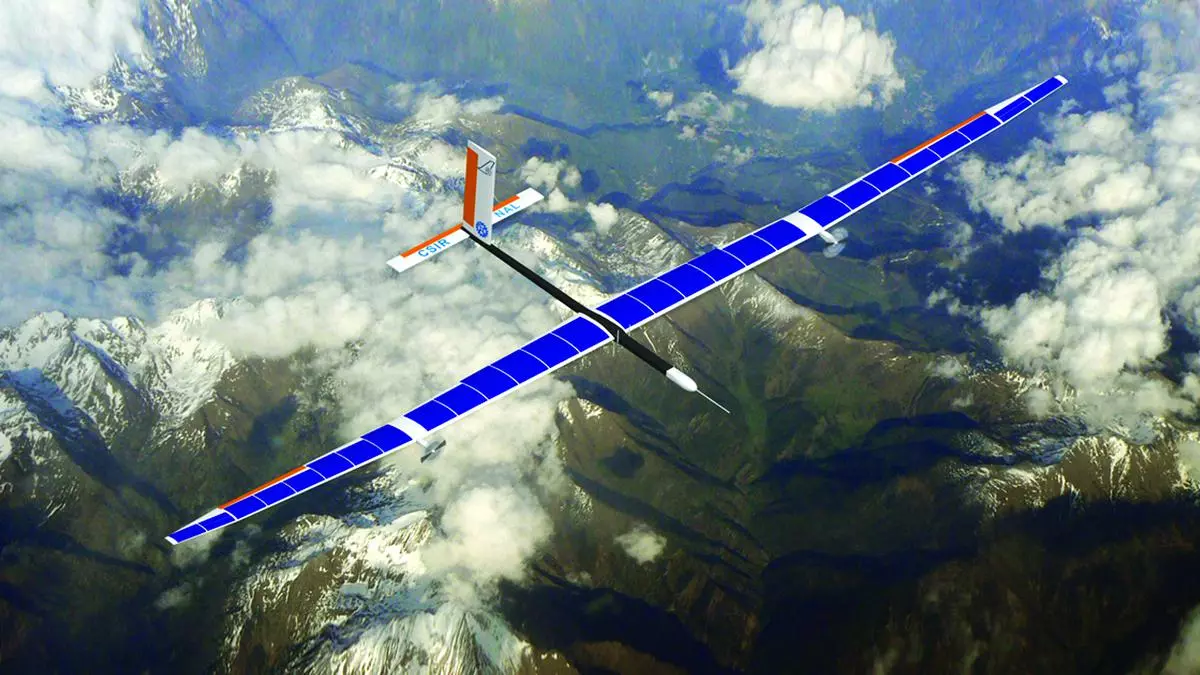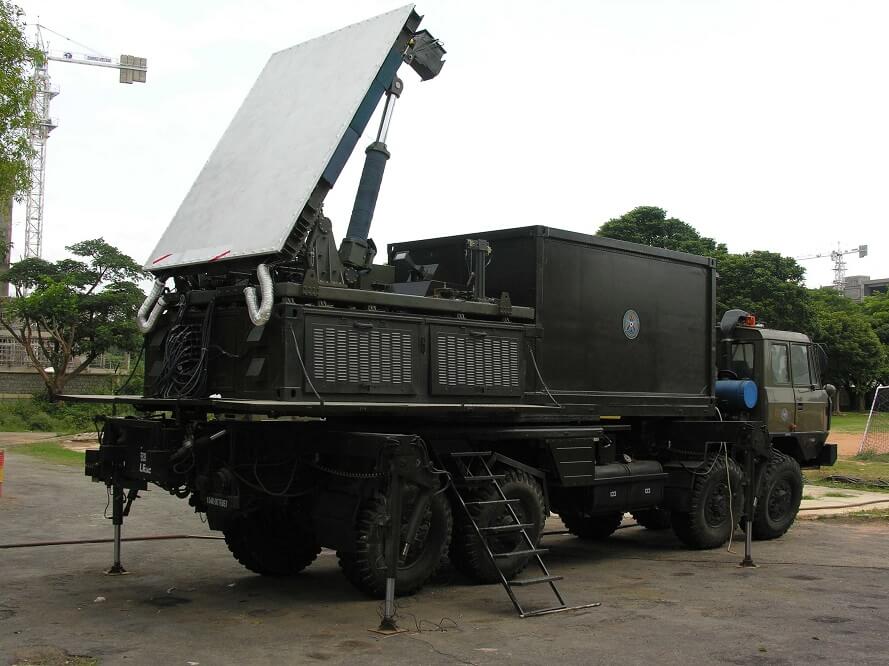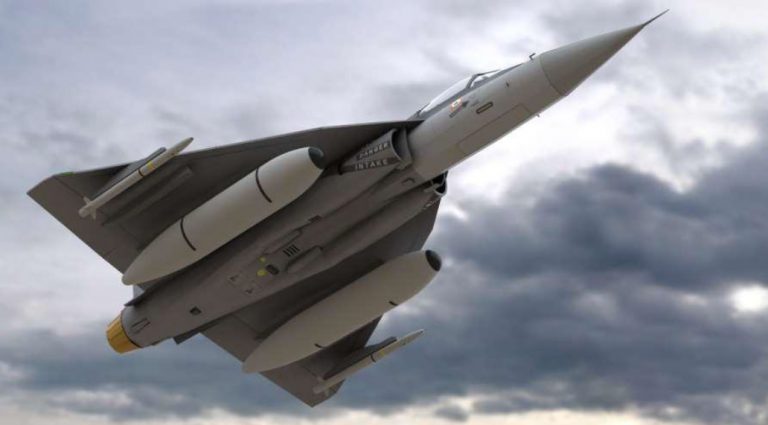News Beat
News Beat reporting is an idrw.org initiative to let our Readers to report News Based on Actual facts but some how has not been reported in Main Stream Media .
SOURCE: RAUNAK KUNDE / NEWS BEAT / IDRW.ORG


Indian Ministry of Defense’s (MoD) Collegiate Committee has granted Approval in principle (AIP) for the indigenous development of the Air-Launched Range Land Attack Cruise Missile (LRLACM) for the Indian Air Force to be used from Fighter jets.
The LRLACM is a homegrown, subsonic missile that is being developed to cater to the requirements of the Indian Army, Indian Air Force, and Indian Navy. Spearheading this ambitious project is the Aeronautical Development Establishment (ADE), a Bengaluru-based DRDO lab known for its contributions to advanced aerospace technologies.
Continue readingSOURCE: RAUNAK KUNDE / NEWS BEAT / IDRW.ORG


The Indian Ministry of Defence (MoD) has marked a significant step towards bolstering its military capabilities with the Approval In-Principle (AIP) granted for the indigenous development of high-altitude platforms (HAPs). These cutting-edge platforms, designed for border surveillance, have the potential to revolutionize military reconnaissance and surveillance efforts, enhancing national security.
HAPs often likened to drones but with a distinct advantage, are engineered to operate at altitudes ranging from 18 to 20 kilometers above the Earth’s surface. This altitude advantage sets them apart from conventional drones, enabling them to survey vast areas and provide critical data for strategic decision-making. While satellites orbit at much greater altitudes using gravitational forces, HAPs are deployed at a lower altitude, granting them greater manoeuvrability and responsiveness.
Continue readingSOURCE: RAUNAK KUNDE / NEWS BEAT / IDRW.ORG

India’s naval prowess continues to evolve as it inches closer to testing the second generation of its Arihant-class submarines. The S4, an eagerly anticipated addition to this class, is set to showcase enhanced capabilities with a 1000-tonne increase in displacement compared to its predecessor.
The S4, the third submarine in this class, achieved a significant milestone when it was quietly launched at Visakhapatnam in late November of the previous year. Satellite imagery has confirmed that the submarine is now out of the dry dock and positioned in the wet dock, marking a pivotal step toward its operational readiness.
Continue readingSOURCE: RAUNAK KUNDE / NEWS BEAT / IDRW.ORG


Francisco Gomes Neto, President & CEO of Embraer, recently highlighted the company’s eagerness to showcase the exceptional capabilities of the C-390 Millennium aircraft in the challenging conditions of India’s high-altitude regions. In a recent media interview, Neto expressed Embraer’s readiness to demonstrate the ruggedness and efficiency of the C-390 Millennium on short or unpaved runways at significant altitudes, at the request of the Indian Air Force (IAF).
The C-390 Millennium, a state-of-the-art transport aircraft, has achieved a significant milestone by attaining Full Operational Capability (FOC) with the Brazilian Air Force in April 2023. Neto emphasized the aircraft’s remarkable versatility, which spans a wide range of operations including air-to-air refuelling, medical evacuation, troop and cargo transport, firefighting, and more.
Continue readingSOURCE: RAUNAK KUNDE / NEWS BEAT / IDRW.ORG


In a significant stride towards bolstering coastal surveillance and maritime security, the Indian Navy is set to equip sixteen Shallow Crafts with the advanced Hull-mounted Sonar ABHAY. Developed by the Naval Physical and Oceanographic Laboratory (NPOL), ABHAY is poised to enhance the capabilities of these vessels, promising a new level of effectiveness in coastal patrolling and sub-surface surveillance.
The Garden Reach Shipbuilders & Engineers Ltd (GRSE) in Kolkata and the Cochin Shipyard Limited (CSL) in Kochi are at the helm of this vital project.
Continue readingSOURCE: RAUNAK KUNDE / NEWS BEAT / IDRW.ORG


India’s Defense Research and Development Organisation (DRDO) has been making significant strides in the development of radar technology, turning its radars into sought-after assets by countries worldwide. The organization’s efforts have not only bolstered India’s self-reliance but have also positioned it as a key player in the international defence market.
BK Das, a distinguished scientist and Director of General Electronics and Communication Systems at DRDO, recently highlighted the organization’s remarkable achievement. He emphasized that DRDO-developed radars have become highly desirable for numerous countries that were once importers of such technology. India’s transformation from an importer to an exporter of advanced radar systems has been a testament to the nation’s technological prowess.
Continue readingSOURCE: RAUNAK KUNDE / NEWS BEAT / IDRW.ORG


The Defense Research and Development Organisation (DRDO) of India is on the cusp of a significant milestone as it prepares to conduct final user and developmental trials of its Indigenous Anti-Radiation Missile, Rudram, later this year.
Rudram, a missile that has undergone meticulous development and refinement, is at the forefront of DRDO’s mission to achieve self-reliance in defence technology. This upcoming round of trials aims to validate and fine-tune the missile’s performance, ensuring it meets the highest standards of efficiency and effectiveness.
Continue readingSOURCE: RAUNAK KUNDE / NEWS BEAT / IDRW.ORG


Following the successful test firing of the Astra Mk1 Beyond Visual Range Air-to-Air Missile (BVR AAM) from the LCA-Tejas, HAL and the IAF are poised to add another formidable weapon to the fighter jet’s arsenal. The ASRAAM, developed by the European missile-maker MBDA, is renowned for its Within Visual Range (WVR) air dominance capabilities and boasts an impressive range of over 25 kilometers.
HAL’s ongoing discussions with MBDA are focused on not only integrating the ASRAAM missile on the LCA-Tejas but also exploring its potential fitment on the Sukhoi Su-30MKI, another cornerstone of India’s air power. This collaborative effort is a testament to India’s drive to harness the expertise of global defense technology leaders to strengthen its own defense capabilities.
Continue readingSOURCE: RAUNAK KUNDE / NEWS BEAT / IDRW.ORG


In a significant development aimed at enhancing the capabilities of the Indian Army, Bharat Earth Movers Ltd. (BEML), a leading Defence Public Sector Undertaking (PSU), has clinched a substantial order worth 385 crore from Bharat Electronics (BEL) and Bharat Dynamics (BDL). The order encompasses the supply of high-mobility vehicles designed specifically for deployment as Command Post Vehicles, a crucial component of modern battlefield communication and coordination.
BEML, known for its expertise in manufacturing and supplying top-notch defence equipment, has successfully secured the order to provide high-mobility vehicles that will serve as advanced Command Post Vehicles.
Continue readingSOURCE: RAUNAK KUNDE / NEWS BEAT / IDRW.ORG


The Indian Navy has embarked on a collaborative journey with the Defense Research and Development Organization (DRDO) to develop a Navy-specific variant of the Very Short Range Air Defence Systems (VSHORAD). This initiative seeks to equip smaller and medium-sized warships with an effective and relatively low-cost defence mechanism against a diverse array of aerial and surface threats.
The development of a Navy-specific VSHORAD system is a strategic move that acknowledges the evolving nature of threats in the air and on the water’s surface. With the ability to provide an additional layer of defence, this system promises to be a significant asset in the Navy’s arsenal.
Continue readingSOURCE: RAUNAK KUNDE / NEWS BEAT / IDRW.ORG


The Hellenic Air Force, an operator of Dassault Rafale and Mirage-2000 aircraft, is closely monitoring the integration process of the Astra Mk1 Beyond Visual Range (BVR) Missile with the Indian Air Force’s (IAF) Rafale fleet. This collaborative effort between the IAF and Dassault Aviation to integrate the Astra missile holds significance for Hellenic Air Force as it seeks to address the challenges posed by older MICA BVR missiles in its own fleet.
While the Rafales operated by both the Hellenic Air Force and the Indian Air Force are equipped with highly advanced Meteor BVR missiles that offer superior range and performance, there is a growing need for a more cost-effective BVR missile option to complement the expensive Meteor missiles. The Meteor missile is considered one of the top BVR missiles in the world, but its high cost has prompted many Rafale operators to explore more budget-friendly alternatives.
Continue readingSOURCE: RAUNAK KUNDE / NEWS BEAT / IDRW.ORG


Deputy Defence Minister Adly Zahari of Malaysia recently addressed concerns related to the ongoing crisis between Russia and Ukraine and its potential impact on the procurement of components and spare parts for the Sukhoi Su-30MKM aircraft used by the Royal Malaysian Air Force (RMAF). While acknowledging that the crisis has indirectly affected the supply chain, he outlined the steps that Malaysia is taking to ensure the continued operational readiness of its aircraft fleet.
The Sukhoi Su-30MKM aircraft has been a cornerstone of Malaysia’s air defence capabilities, and its operational continuity is of paramount importance. Adly Zahari highlighted the fact that, despite the challenges, Malaysia has established a contingency plan to ensure that the required spare parts and components for the aircraft are available when needed.
Continue readingSOURCE: RAUNAK KUNDE / NEWS BEAT / IDRW.ORG


Brazil’s foray into the realm of nuclear-powered attack submarines has garnered global attention, and the recent developments in its naval sector have stirred interest in India’s cutting-edge BrahMos-NG cruise missile.
The Brazilian state-owned naval company ICN (Itaguaí Construções Navais) has embarked on a monumental journey with the construction of Álvaro Alberto, Brazil’s first nuclear-powered attack submarine. This vessel, weighing 6,000 tons, draws inspiration from the French Scorpène class, a lineage known for its advanced capabilities. Set to be ready for induction by the turn of this decade, the Álvaro Alberto is poised to usher in a new era of naval warfare for Brazil.
Continue readingSOURCE: RAUNAK KUNDE / NEWS BEAT / IDRW.ORG

The Indian Air Force (IAF) is set to advance its long-pending initiative to acquire 114 Multi-Role Fighter Aircraft (MRFA), aimed at addressing strategic capability deficiencies and enhancing the nation’s aerial prowess. The acquisition process, which has been eagerly anticipated, is expected to gain traction as the IAF moves towards securing the Acceptance of Necessity (AoN) from the Defence Acquisition Council (DAC) in the coming months.
The anticipated AoN, a critical milestone in the procurement process, is expected to be obtained within the next two to three months. Following this, the IAF intends to release the Request for Proposal (RFP) for the acquisition of these advanced fighter aircraft. The program’s estimated cost is approximately $20 billion.
Continue readingSOURCE: RAUNAK KUNDE / NEWS BEAT / IDRW.ORG


In a stride towards innovation and excellence, Hindustan Aeronautics Ltd (HAL) is stepping into the realm of Artificial Intelligence (AI) to transform the landscape of aircraft maintenance. Chairman & Managing Director of HAL, CB Ananthakrishnan, recently unveiled the organization’s plans to develop AI-based products that promise to revolutionize aircraft maintenance through predictive technology.
Speaking at the Indian Institute of Management-Calcutta’s annual business conclave, Ananthakrishnan highlighted HAL’s groundbreaking efforts in harnessing AI for the betterment of aviation. The core focus lies in creating an AI-powered predictive maintenance system that will play a pivotal role in ensuring the health, efficiency, and longevity of aircraft.
Continue reading